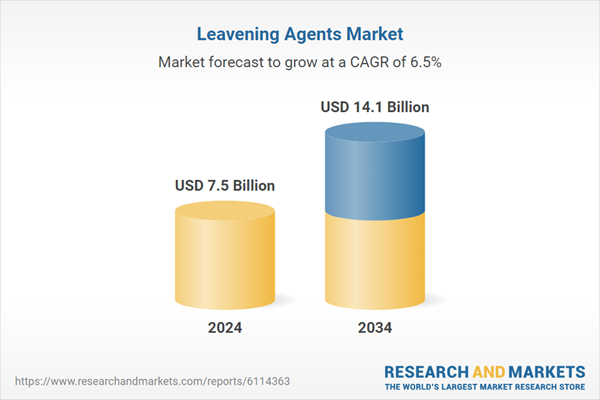Developments in food manufacturing technology, especially in emerging markets, are opening new possibilities. Evolving consumer expectations, particularly around nutrition and sustainability, are reshaping the leavening agent landscape. Companies are investing in R&D to create solutions that support lower energy consumption and healthier outputs. Demand continues to tilt toward natural, minimally processed inputs, prompting a steady shift toward baking soda, powders, and biological leaveners driven by fermentation methods.
In 2024, the chemical leavening agents segment held a 34.8% share with a valuation of USD 2.6 billion. Despite their widespread use in baking due to consistent performance, chemical leaveners such as acids and bicarbonates are seeing pushback from health-conscious buyers. This has paved the way for biological alternatives like eco-friendly enzymes, including amylases and proteases, which are gradually gaining traction across multiple applications.
The powdered leavening agents segment held a 39.7% share in 2024 and is expected to grow at a CAGR of 6.3% through 2034. This format remains a favorite for its versatility, shelf stability, and seamless integration into food production workflows. The ease of use, accuracy in measurement, and instant solubility make powders especially suitable for baked and processed food categories, solidifying their appeal across both large-scale and artisanal production setups.
Europe Leavening Agents Market held a 34.3% share in 2024, owing to the rising demand for healthy, gluten-free, and artisanal baked goods. The region continues to experience strong momentum due to increased consumption of convenience foods and evolving consumer health priorities. Urbanization and lifestyle changes are also spurring growth, especially in emerging markets. The region remains key to the global market’s revenue outlook as it embraces clean-label and sustainable ingredient trends.
Notable players shaping this industry include DuPont de Nemours, Inc., Lallemand Inc., Lesaffre Group, Kerry Group plc, and Cargill Incorporated. To strengthen their market position, leading companies are adopting strategies centered on product innovation, global expansion, and sustainable sourcing. They are developing advanced formulations to meet clean-label and allergen-free requirements, while also streamlining production to improve cost efficiency. Mergers and partnerships are helping them reach untapped markets, especially in developing economies. At the same time, companies are investing in environmentally responsible operations and digital transformation in supply chain logistics, reinforcing brand credibility and staying competitive amid evolving consumer expectations.
Comprehensive Market Analysis and Forecast
- Industry trends, key growth drivers, challenges, future opportunities, and regulatory landscape
- Competitive landscape with Porter’s Five Forces and PESTEL analysis
- Market size, segmentation, and regional forecasts
- In-depth company profiles, business strategies, financial insights, and SWOT analysis
This product will be delivered within 2-4 business days.
Table of Contents
Companies Mentioned
- Lesaffre Group
- Angel Yeast Co., Ltd.
- Lallemand Inc.
- AB Mauri (Associated British Foods)
- Kerry Group plc
- Cargill, Incorporated
- DuPont de Nemours, Inc.
- Innophos Holdings, Inc.
- Solvay S.A.
- ICL Food Specialties
- Corbion N.V.
- Puratos Group
- DSM-Firmenich
- Archer Daniels Midland Company (ADM)
- Church & Dwight Co., Inc.
- Clabber Girl Corporation
- Wright Group
- Kudos Blends Limited
- Vitusa Products, Inc.
- Asmussen GmbH
Table Information
| Report Attribute | Details |
|---|---|
| No. of Pages | 220 |
| Published | July 2025 |
| Forecast Period | 2024 - 2034 |
| Estimated Market Value ( USD | $ 7.5 Billion |
| Forecasted Market Value ( USD | $ 14.1 Billion |
| Compound Annual Growth Rate | 6.5% |
| Regions Covered | Global |
| No. of Companies Mentioned | 20 |









